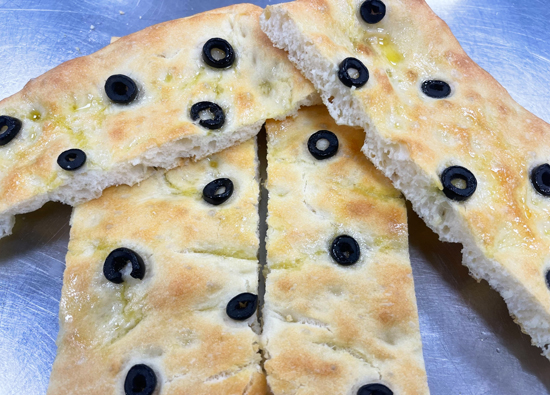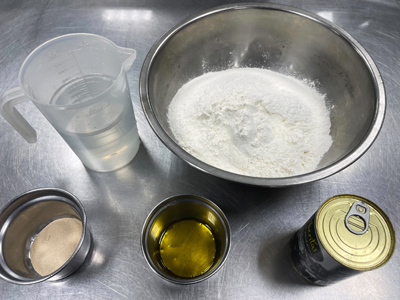06.2023 Life Guide
Italian cuisine: Foccacia
Yu Chang Technical Commercial Vocational High School / Zheng Zhixiang


 In Italian cuisine, focaccia is a quite common accompanying bread that appeared as early as the Roman period. Because olive oil must be applied to the mold and dough during the production process, compared with White bread or French bread, Foccacia has more olive oil flavor. If sliced black olives, dried tomatoes, rosemary, oregon and other spices are sprinkled, the taste will be more diverse. Following the teaching steps of this episode of 'Gourmet Column', it is not difficult to make delicious Foccacia!
In Italian cuisine, focaccia is a quite common accompanying bread that appeared as early as the Roman period. Because olive oil must be applied to the mold and dough during the production process, compared with White bread or French bread, Foccacia has more olive oil flavor. If sliced black olives, dried tomatoes, rosemary, oregon and other spices are sprinkled, the taste will be more diverse. Following the teaching steps of this episode of 'Gourmet Column', it is not difficult to make delicious Foccacia!Many people believe that making bread requires a lot of effort. In addition to kneading the dough surface into a smooth and soft shape, it also needs to be able to pull out the film to represent the completion of dough expansion. In fact, as long as long-term fermentation is used, the dough can also hydrolyze and produce gluten, making it easy to make delicious bread!
Material
Medium gluten flour 500g
Salt 10g
Instant yeast 6g
Ice water 350g
Cold pressed virgin olive oil 15g
 [Practice]
[Practice]Mix the flour, yeast, and salt well.
Add water and knead evenly.
Add olive oil again and continue to knead well (the dough does not need to be deliberately kneaded until the surface is smooth).
After completion, cover the dough with a lid or plastic wrap and let it ferment for 30 minutes.
Take out the dough and knead it from the outside to the center to make the skin smooth.
Cover the dough again and let it ferment for 60 minutes.
Divide the dough into 2 parts, each weighing 400g, roll it back into smooth spherical shapes, and then place it in an iron plate coated with olive oil and pat flat.
Let the dough ferment for 45 minutes, allowing it to fully ferment and become larger.
Gently pull the dough from the center to the four corners, and poke a large number of irregular holes on the surface with five fingers. The movements should be gentle, allowing the air to be retained as much as possible in the dough.
Place sliced black olives on the surface of the dough and drizzle with a little olive oil.
The oven temperature is set to 220 ℃ on top and 220 ℃ on bottom, and the roasting is completed after 20 minutes.
#




















